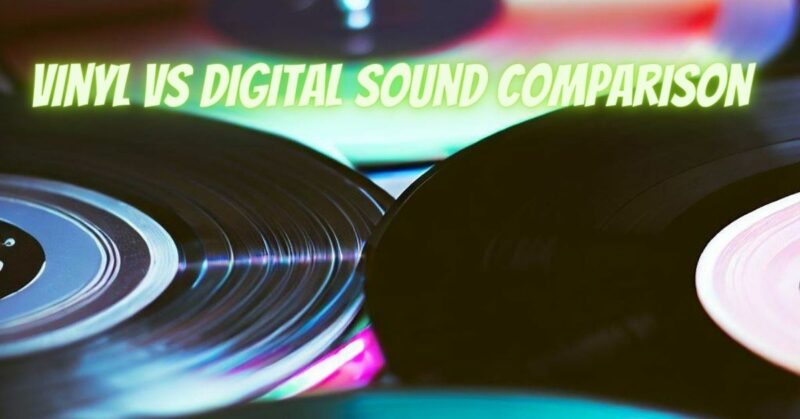In the realm of music reproduction, the choice between vinyl and digital formats has sparked passionate debates among audiophiles. Each medium offers a unique sonic experience, and the vinyl versus digital sound comparison is often seen as a clash between the analog warmth of vinyl and the pristine clarity of digital audio. This article delves into the intricacies of both formats, examining their characteristics, strengths, and potential drawbacks to provide a comprehensive understanding of the vinyl versus digital sound debate.
- Vinyl Sound Characteristics: Vinyl records are lauded for their warm, analog sound. The grooves on a vinyl record are physically traced by a stylus, creating a continuous and organic representation of the audio signal. Vinyl enthusiasts appreciate the inherent imperfections, harmonic distortions, and subtle surface noise that contribute to the distinctive character of the medium.
- Analog Warmth and Depth: Vinyl records are known for their ability to impart a sense of warmth and depth to the music. The analog nature of the format, combined with the unique characteristics of playback equipment, can create a rich and immersive sonic experience. Vinyl is often favored for genres like jazz, blues, and classic rock, where the analog warmth complements the music.
- Dynamic Range and Nuances: Vinyl is celebrated for its ability to capture a wide dynamic range and subtle nuances in the music. Audiophiles appreciate the tactile and visceral nature of vinyl playback, as the needle traverses the grooves and reproduces the music with a level of detail that can be emotionally engaging.
- Vinyl Drawbacks: While vinyl has its charms, it is not without drawbacks. Surface noise, pops, and clicks are inherent to the format and can be distracting, especially in poorly maintained or worn records. Additionally, vinyl playback requires careful setup, and environmental factors like dust and humidity can impact performance.
- Digital Sound Characteristics: Digital audio, represented by formats like CDs and streaming, offers a different sonic landscape. Digital reproduction is characterized by precision, accuracy, and the absence of inherent imperfections. The signal is encoded in discrete numerical values, providing a clean and faithful representation of the original recording.
- Clarity and Precision: Digital audio is prized for its clarity and precision. The absence of surface noise and imperfections allows for a cleaner and more transparent listening experience. High-quality digital recordings, especially those in lossless formats, can reproduce intricate details with remarkable accuracy.
- Consistency and Convenience: Digital audio offers consistency and convenience. Digital formats provide uniform playback, unaffected by the wear and tear that can impact vinyl records. Additionally, digital music can be easily stored, accessed, and shared, contributing to the widespread adoption of digital formats in the modern era.
- Digital Drawbacks: Despite its advantages, digital audio is not immune to criticism. Some audiophiles argue that the precision of digital reproduction can come at the expense of a certain musical warmth and character found in analog formats. The “sterile” or “clinical” nature of some digital recordings is a point of contention for those who prefer the analog sound.
- Format Considerations: Digital audio encompasses various formats, each with its own characteristics. Lossless formats like FLAC and WAV aim to preserve the original recording quality, while compressed formats like MP3 sacrifice some fidelity for file size. Audiophiles often gravitate towards lossless formats for critical listening.
- Subjectivity and Personal Preference: Ultimately, the choice between vinyl and digital audio is highly subjective and often rooted in personal preference. Some listeners prioritize the tactile and nostalgic aspects of vinyl, while others value the convenience and pristine reproduction offered by digital formats.
The vinyl versus digital sound debate is a nuanced exploration of sonic preferences and the unique characteristics of each medium. Vinyl offers a tactile, warm, and immersive experience, while digital audio provides precision, clarity, and convenience. In the end, the choice between vinyl and digital is a matter of individual taste, with both formats contributing to the diverse and rich landscape of audio enjoyment. Whether savoring the crackles of vinyl or embracing the clinical precision of digital, audiophiles find joy in the distinct pleasures offered by each medium.


